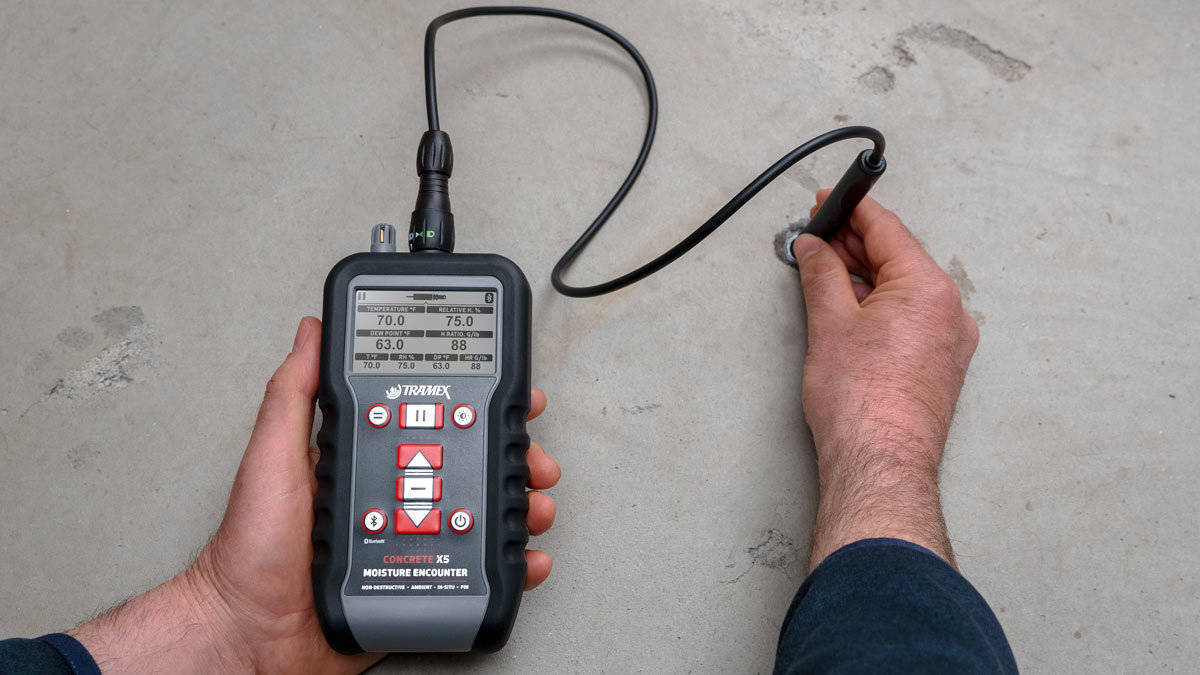
Concrete Relative Humidity Testing
The F2170 procedure for concrete Relative Humidity testing of concrete floor slabs states that we should:
- Insert the hole liner to the bottom of the hole.
- Cap or seal the open end of the hole liner and any open gaps at the top of the liner per manufacturer’s instructions.
- Allow 24 hours to achieve moisture equilibrium within the hole before making relative humidity measurements.
The procedure goes on to state that the person carrying out the test “Remove the rubber stopper at the top of the liner and insert the probe" allowing time for the temperature and humidity of the probe to equalize with the concrete.
The 24 Hour Waiting Period
The important point here is that the 24 hours is meant for the Sleeve Only to be inserted in the concrete. The 24 hours is not meant for the probe or sensor to acclimate within the hole. The sensor should not be in the hole during this time. The fact that this is the procedure for F2170 means that it should be followed. It is helpful to illustrate the reasons why the procedure is written this way so as to understand why it is so important.
Based on Research
The F2170 standard was written in part based on studies carried out by Goran Hedenblad in Lund University Sweden. In Hedenblad’s paper on drying of construction water in concrete, he states that the “Measurement of RH should not be performed until 3 to 4 days after the hole has been drilled, with the measuring cylinder left in the hole. The disruption in moisture and temperature caused by drilling in the concrete will have ceased by then”. This waiting time while the airspace in the sleeve acclimates, or measuring cylinder as Hedenblad calls it, has been reduced to 24 hours in the F2170-18 standard as a result of the Precision and Bias testing for F2170. The P&B tests gave sufficient evidence to show that 24 hours is a more suitable time period. It was explained to me that this was made possible because the improvement in drill bits over the years has reduced the disruption in moisture and temperature caused by drilling.
Concrete RH Sensor Reading Too High
By ignoring the 24-hour waiting time and inserting probes too soon after drilling, the RH levels will increase above what they should be in order to properly determine the actual moisture condition of a slab. This is especially problematic if this increase causes the RH to reach saturation, commonly above 93% in concrete. As when this happens the readings will remain high even if the concrete is actually ‘dry enough’ to receive the floor coatings or coverings.
Perform the F2170 Correctly
F2170 is a brilliant test method for determining the moisture condition within the concrete when it is done correctly. To do so, however, it needs to be understood that we are not only measuring the tiny amount of moisture in vapor form within the concrete, but rather using the vapor level in air which is in equilibrium with the concrete to indicate the moisture condition of the concrete. This is exactly why we use the relative humidity rather than the absolute humidity or vapor pressure, but that is the subject of another article.
The ASTM F2170 procedure can be carried out with the Hygro-i2 Probe, hole liners and the CMEX5 concrete moisture meter. Tramex also offers several concrete moisture test kits to perform the F2170 test. The Concrete Determinator Inspector Kit, the Flooring Inspector EZ Kit and the Flooring Inspector and Master kits contain a variety of necessary tools to perform this test.
Why Risk It? Test with Tramex!